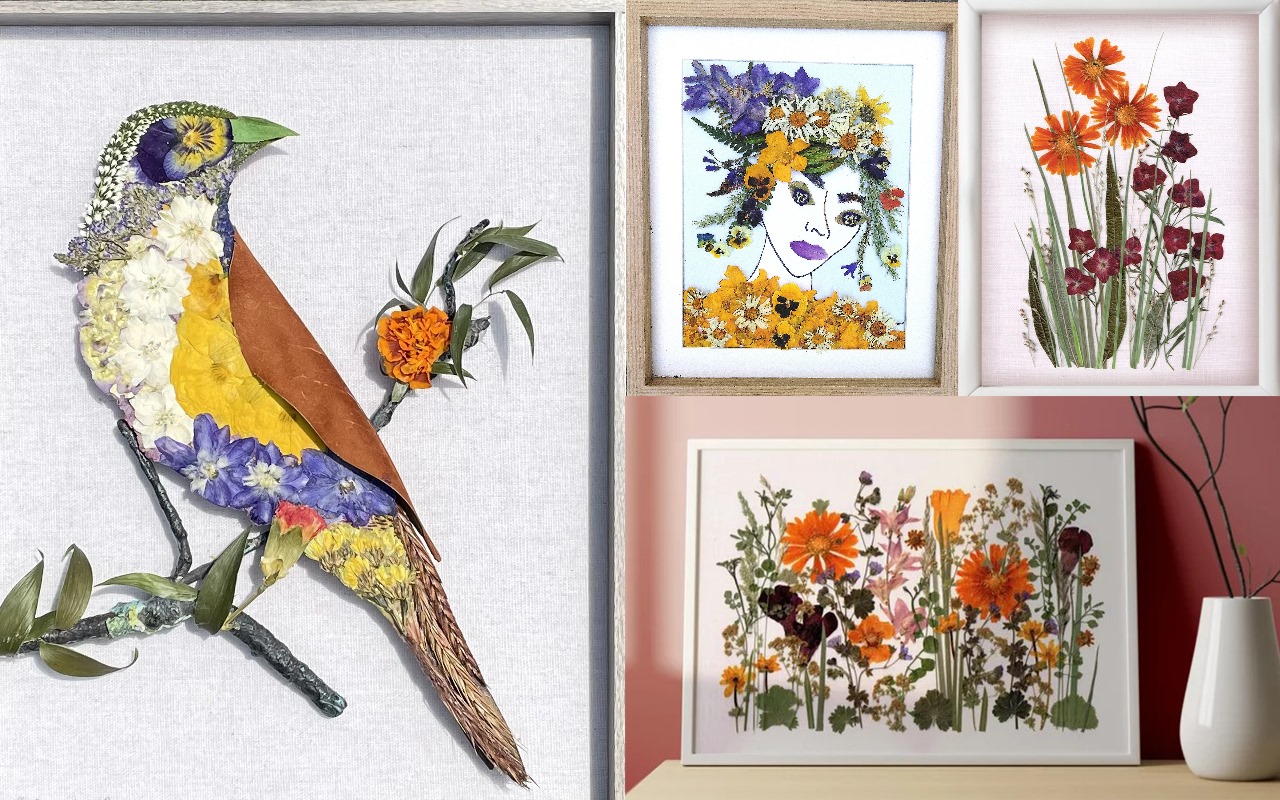
Robert Draws – Oshibana Art is a unique form of art that uses pressed flowers and botanical materials. This technique creates beautiful and natural images that captivate many art lovers worldwide. Originating from Japan in the 16th century, Oshibana has stood the test of time and continues to inspire artists today. Its delicate beauty and connection to nature make it a timeless craft worth exploring.
Oshibana Art involves carefully pressing flowers and leaves to preserve their shape and color. The pressed materials are then arranged to form artistic images, often framed as decorative pieces. This art form started as a way to preserve flowers but evolved into a respected artistic technique. Today, artists use various flowers and plants to create vibrant and lasting works of art. Oshibana reflects a deep appreciation for nature and its fleeting beauty. The process of making Oshibana art requires patience and skill. Each flower must be chosen carefully to ensure it presses well and retains color. The pressing process involves flattening flowers between absorbent paper and applying pressure. After drying, these flowers become delicate, flat pieces ready for use in compositions. Artists then arrange the pressed elements into creative designs, capturing scenes from nature or abstract patterns.
“Read about: Jenny Saville’s ‘The Anatomy of Painting’: A Bold Look at the Human Body”
Oshibana’s history dates back to Japan’s Muromachi period in the 16th century. It was initially used for preserving flowers brought back from temple visits or special occasions. Over time, it transformed into an art form practiced by samurais and nobles. The art was appreciated for its beauty and symbolic meanings attached to different flowers. The technique gradually spread from Japan to other parts of the world. Western countries adopted Oshibana in the 19th century, blending it with their botanical illustration traditions. Modern artists have embraced the art form, incorporating contemporary themes and styles. Despite changes, the essence of Oshibana remains the same — to celebrate nature’s beauty through pressed flowers.
The key technique in Oshibana is pressing and drying flowers properly. Flowers with vibrant colors and firm petals work best for pressing. Some artists use flower presses, while others prefer heavy books for applying pressure. Drying can take several days to weeks depending on the flower type. Once dried, the flowers are fragile and must be handled gently. They can be glued onto paper, fabric, or wood to create different artistic effects. Artists often use tweezers to place the tiny flower pieces precisely. The composition is designed with care, balancing colors, shapes, and textures.
Modern Oshibana artists sometimes add other materials like gold leaf or watercolor backgrounds. These elements enhance the visual appeal and give a unique touch to each artwork. However, traditional Oshibana focuses mainly on natural pressed flowers without added colors or paints.
“Read more: Edgar Degas: Master of Movement and Modern Life”
Oshibana art is popular in home decor, greeting cards, and jewelry design. Framed Oshibana pictures brighten living spaces with natural elegance. Many crafters create bookmarks, coasters, and phone cases featuring pressed flower designs. Artists also use Oshibana in fashion, embedding pressed flowers into fabric or accessories. This fusion of nature and fashion is growing in popularity worldwide. In addition, Oshibana workshops and classes teach new generations this delicate art form. Social media has played a significant role in spreading Oshibana’s popularity. Artists share tutorials, time-lapse videos, and finished artworks online. This exposure inspires more people to try pressed flower art and appreciate its subtle beauty.
To keep Oshibana art looking fresh, proper care is essential. Pressed flowers can fade if exposed to direct sunlight for too long. It is best to display artworks in shaded areas or under UV-protective glass. Humidity and moisture should also be controlled to prevent mold growth on the flowers. Sealing the artwork with protective varnish or glass framing helps preserve it. With good care, Oshibana pieces can last for many years, maintaining their vibrant colors and delicate forms. Collectors value original Oshibana artworks for their uniqueness and natural charm. Each piece is one-of-a-kind since no two flowers are exactly the same. This uniqueness makes Oshibana a special addition to any art collection.